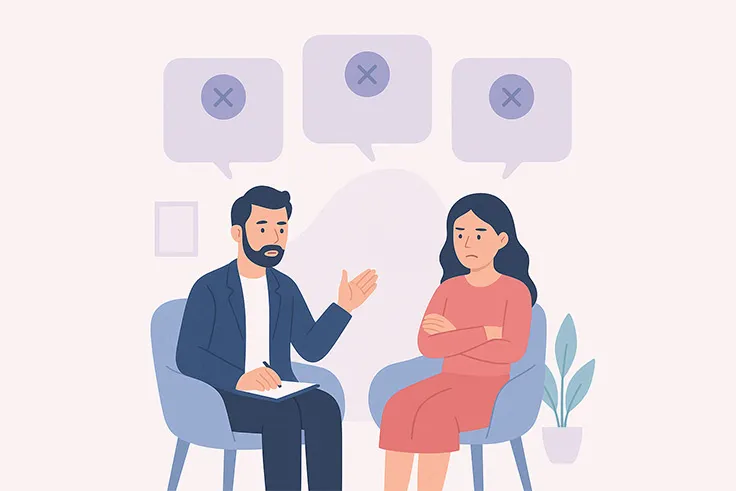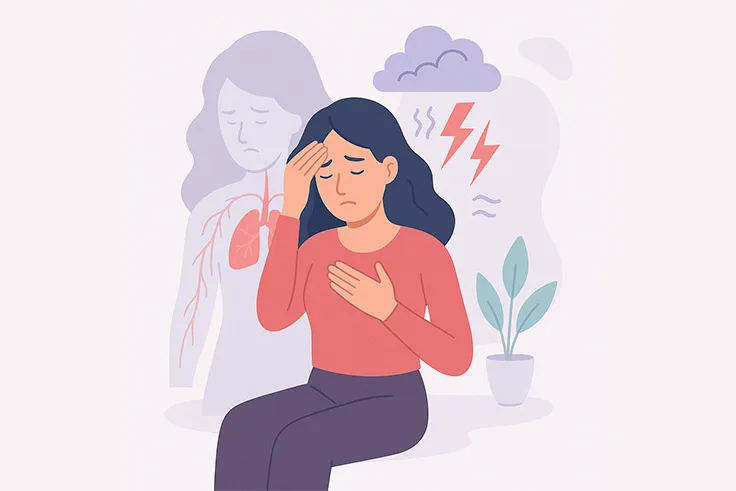
Childhood Trauma
Childhood trauma is a consequence of overwhelmingly negative experiences that a child might have, which can have lasting negative effects. Some of these experiences include but are not limited to – abuse, neglect or violence, which mostly happen in relationships and are called interpersonal trauma. Children can also experience traumatic events such as, accidents, natural disasters, medical procedures or sudden loss of a parent/guardian. Another thing to note is that childhood trauma does not necessarily have to occur to the child directly. For example, watching their parents or a loved one suffer can be extremely traumatic to a child. Exposure to violent media or a violent household can equally traumatize children. However, just because an experience is upsetting it does not mean they are likely to cause trauma.
The Diagnostic and Statistical Manual of Mental Disorders, 5th Edition (DSM-5) does not list or define childhood trauma separately, however, under child mental disorders classification it provides a clear definition for diagnosis of post-traumatic stress disorder PTSD in children. PTSD is the most commonly diagnosed form of trauma and refers to the phenomena of re-experiencing the traumatic events again and again in your mind and the stress that comes with it. Therapy for childhood trauma is available but many of those in need live with the effects of trauma without ever getting a formal diagnosis or the sort of trauma treatment that could help them. There is an undisputed correlation between adult ill-health, both physical and psychological, and unresolved trauma.
Signs and symptoms of childhood trauma
Some children are at a higher risk than others for suffering from long-term effects from a traumatizing event. How a child processes or experiences these events and how it is handled by people around them can have a strong influence on the extent of trauma that they actually end up going through.
Children tend to have difficulty articulating their feelings and thoughts and are often unable to verbalize the emotions inside them. They use the only alternate channel and act it out. Therefore, these are a few overlooked signs and symptoms to look out for trauma related stresses in children:
- Psychosomatic symptoms: Children can complain of stomach upsets or headaches, but on seeing a doctor they might declare the child to be physically fit. It may seem as though they are using this as an excuse to avoid doing a task or going somewhere.
- Outbursts: Irrational and unexplainable anger outbursts might lead parents or guardians to believe that their child is becoming disobedient or mischievous and does not want to follow instructions and can be a sign of a trauma stress.
- Clinginess: Sudden clingy behaviour among young children towards their parents can be evident post a traumatic event.
- Restlessness: Loss in focus and concentration in academics or even play time. An obvious sign would be a sudden plunge in academic performance in an otherwise conscientious student.
- Intrusive thoughts: One common sign of PTSD is increased thinking about death and safety. While some kids are naturally more morbid and fascinated by death, others tend to develop an obsession with their and their loved ones’ safety.
- Other common signs: Anxiety, depression, fear of isolation, poor self-esteem, increased irritability, changes in appetite and problem sleeping.
Common causes for childhood trauma
Among clinicians, a common term that deals with researching trauma in children and its lasting effects that goes around, is Adverse Childhood Experiences (ACE). The ACE study began in the mid-1990s and was done by the Centers for Disease Control and Prevention in Atlanta, USA where more than 17000 people volunteered.
The study identified ten of the most traumatic events or experiences that a child is likely to encounter. The consequences of such events have the potential to leave lasting negative effects on the child for their entire lifetimes without effective trauma therapy. With more data and volunteers that list has broadened, and following are the ten common causes for childhood trauma:
- Growing up in the presence of a parent/guardian who is an addict or a chronic substance abuser.
- Growing up in a household where the parent or the main caregiver goes to prison.
- Growing up in a home where the parent has been diagnosed with a mental illness such as schizophrenia, or depression.
- Witnessing either of their parents being physically abused by the other.
- Experiencing emotional abuse. This can include parents being emotionally unavailable due to long working hours or parents being routinely demeaning, scaring or verbally abusing the child.
- Experiencing physical abuse. This can be experienced either at home by parents who use physical abuse to discipline, or outside home by an authority figure.
- Experiencing sexual abuse. Can be caused by parents, family members, even other children or sometimes people who have authority or power over the child.
- Losing their parent or guardian, which might happen due to their death, divorce or abandonment.
- Growing up with emotional neglect. Sometimes parents fail to notice or respond enough or appropriately to a child’s feelings and there is little or no emotional support or validation.
- Growing up with physical neglect -this applies when children are not adequately fed or clothed, kept clean, or kept warm in cold weather.
- Growing up with emotional abuse and neglect- when parent are very critical and may have unreasonable expectations that could hamper the development of the child.
Effects of childhood trauma
Early childhood trauma can lead to many complications both in childhood and in adulthood. It is a risk factor for many mental health conditions including adult depression, PTSD and most psychiatric disorders, as well as a host of medical problems like heart attack and stroke, cancer, and obesity.
Childhood trauma leads to behavioural changes in the sense that people who suffer from it try to find escape routes from traumatic memories through risky behaviours. Such risky behaviours are driven by impulsivity, and involve drinking, smoking, drug use and even bingeing for comfort. Again, these habits lead to health problems.
Moreover, there is a direct biological effect that occurs when one’s body undergoes extreme stress. When a person experiences something anxiety-provoking, the stress response activates which leads to the production of adrenaline, increase in heartbeat, etc. When stronger surges of adrenaline happen more often than usual and natural, it causes a lot of wear and tear of the body and leads to inflammation. Inflammation has been associated with many illnesses including cardiovascular disease and autoimmune diseases.
Diagnosis of childhood trauma
As mentioned earlier, it is important to note that not all experiences of trauma will lead to a trauma response or trauma-related disorder or diagnosis. Usually these experiences take their natural course of time until the signs of trauma related response become clearer, and they only meet a specific diagnostic criteria if they extend for more than a month or longer while disrupting the child’s daily life and start impacting their social and emotional well-being.
Broadly, there are two trauma diagnosis:
- Post-Traumatic Stress Disorder (PTSD): Symptoms including recurrent bad dreams, loss of appetite and or interest in doing things, flashbacks, avoiding reminders of the traumatic event by avoiding conversations. The Diagnostic and Statistical Manual of Mental Disorders, 5th Edition (DSM-5) does not list or define childhood trauma separately, however, under child mental disorders classification it provides a clear definition for diagnosis of post-traumatic stress disorder PTSD in children.
- Complex Trauma: Also known as Complex PTSD, has been proposed as a potential new diagnostic category in the DSM-5. This describes how exposure to prolonged traumatic events impact development in children and its extended negative effects via emotional dysregulation through to their adult lives. Complex trauma is chronic and begins in early childhood and usually occurs with the child’s primary caregiving system and or social environment.
Dealing with childhood trauma
Family can be a good and often the only support system for a child and a key element towards reducing the impact trauma has on a child, because they are the most influenced by the people immediately around them. A few ways to support a child after a distressing event are:
- A reassuring pat on the back, or hugs gives them a feeling of security which is essential in the aftermath of a disturbing event.
- Children always look to adults for reassurance after traumatic events, so it is important that as a caregiver or parent you act calm. Try not to discuss your anxieties with your children or when they are around as children quickly pick up on anxiety.
- Encourage kids to play with others and enjoy themselves. The distraction is good for them and gives them a sense of normalcy.
- It is extremely important to listen and listen well. It is important to understand how the child views the situation and what is confusing or troubling them. Let the child know that it is okay to let you know how they are feeling.
- Help them relax by following breathing exercises because breathing becomes shallow when anxiety sets in and deep belly breaths can help children calm down.
- Try to acknowledge what they are feeling when they tell you, do not be dismissive about their concerns. Simply confirm whatever you are hearing.
Frequently Asked Questions
Q. What are some of the signs of PTSD in children?
In very young children, some indicators would be bedwetting, inability to speak, and being overly clingy with a parent or a caregiver. The adolescents, however, may show some disruptive and destructive behaviour.
Q. Does the DSM-5 enlist childhood trauma as a mental health condition?
The Diagnostic and Statistical Manual of Mental Disorders, 5th Edition (DSM-5) does not list or define childhood trauma separately, however, under child mental disorders classification it provides a clear definition for diagnosis of post-traumatic stress disorder PTSD in children. Moreover, childhood trauma is a critical risk factor for many mental and physical health conditions.
Submit a Comment
Your email address will not be published. Required fields are marked *
Related reading
What Not to Expect from Therapy: Dispelling Common Misconceptions
24 April, 2025
You finally booked your first therapy session, nerves and hope swirling inside you. Maybe you’ve heard that therapy can work wonders – and it can. In f...
It’s Not Just in Your Head: How Trauma Affects Your Body and How You Can Heal
23 April, 2025
Have you ever noticed aches, fatigue, or tension in your body after a stressful or traumatic experience? If so, you’re not alone. When we think of trauma...
How to Prepare for Your First Therapy Session: A Beginner’s Guide
5 March, 2025
Choosing to begin therapy is a courageous and empowering decision. It signifies your willingness to invest in your mental and emotional well being, it’s ...





